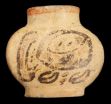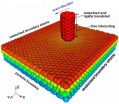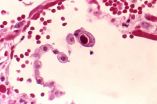(Press-News.org) (Boston) – A review article by researchers at Boston University School of Medicine (BUSM) debunks the widely-believed concept that hypertension, or high blood pressure, is the result of excess salt causing an increased blood volume, exerting extra pressure on the arteries. Published online in the Journal of Hypertension, the study demonstrates that excess salt stimulates the sympathetic nervous system to produce adrenalin, causing artery constriction and hypertension.
The research was led by Irene Gavras, MD, and Haralambos Gavras, MD, both professors of medicine at BUSM.
"The purpose of this paper is to correct an erroneous concept that has prevailed for many years, even though scientific evidence has mounted against it," said Irene Gavras, who is also a physician in Boston Medical Center's Hypertension practice.
The term "volume-expanded hypertension" implies that excess salt leads to the retention of extra fluid within the arterial circulatory system, causing an increase in blood volume and added pressure on the arterial walls. However, research has shown that conditions characterized by the expansion of blood volume from other causes, such as the secretion of antidiuretic hormone or the excessive elevation of blood sugar, do not cause a rise in blood pressure because the extra fluid is accommodated by the distention of capillaries and veins.
"The body's circulatory system is a highly flexible vascular system with the capacity to open up new capillaries and distend veins in order to accommodate increased fluid volume," said Irene Gavras.
Through a review of numerous studies, the researchers demonstrated that the mechanism of hypertension resulting from the excessive consumption and retention of salt stimulates the sympathetic nervous system in the brain to increase adrenaline production. The increased adrenalin being circulated throughout the body causes the arteries to constrict, which results in resistance to blood flow and a decrease in circulatory volume.
The over-activation of the sympathetic nervous system – part of the autonomic nervous system that helps maintain the body's homeostasis – has been recognized clinically as a characteristic of hypertension that accompanies renal failure, which is the most typical example of elevated blood pressure from excessive salt retention. Diuretics, which remove excess salt, are widely used to treat this type of hypertension. However, this study provides convincing evidence that the sympathetic nervous system should be the focus of further investigations into treatments for hypertension.
"The implication of our findings shows that the optimal treatment for hypertension, for cases associated with renal failure, should not only include diuretics but also the use of drugs that block the central sympathetic nervous system," said Irene Gavras.
INFORMATION:
This research was supported by a series National Institutes of Health (NIH) grants.
About Boston University School of Medicine
Originally established in 1848 as the New England Female Medical College, and incorporated into Boston University in 1873, Boston University School of Medicine today is a leading academic medical center with an enrollment of more than 700 medical students and more than 800 masters and PhD students. Its 1,246 full and part-time faculty members generated more than $335 million in funding in the 2009-2010 academic year for research in amyloidosis, arthritis, cardiovascular disease, cancer, infectious disease, pulmonary disease and dermatology among others. The School is affiliated with Boston Medical Center, its principal teaching hospital, the Boston and Bedford Veterans Administration Medical Centers and 16 other regional hospitals as well as the Boston HealthNet.
END
ATLANTA –January 11, 2012– Updated guidelines on nutrition and physical activity for cancer prevention from the American Cancer Society stress the importance of creating social and physical environments that support healthy behaviors. The report includes updated recommendations for individual choices regarding diet and physical activity patterns, but emphasizes that those choices occur within a community context that can either help or hinder healthy behaviors.
The updated guidelines include recommendations for community action to accompany the four major recommendations ...
Troy, N.Y. – A scientist at Rensselaer Polytechnic Institute and an anthropologist from the University at Albany teamed up to use ultra-modern chemical analysis technology at Rensselaer to analyze ancient Mayan pottery for proof of tobacco use in the ancient culture. Dmitri Zagorevski, director of the Proteomics Core in the Center for Biotechnology and Interdisciplinary Studies (CBIS) at Rensselaer, and Jennifer Loughmiller-Newman, a doctoral candidate at the University at Albany, have discovered the first physical evidence of tobacco in a Mayan container. Their discovery ...
Why do heavy coffee drinkers have a lower risk of developing Type 2 diabetes, a disease on the increase around the world that can lead to serious health problems? Scientists are offering a new solution to that long-standing mystery in a report in ACS' Journal of Agricultural & Food Chemistry.
Ling Zheng, Kun Huang and colleagues explain that previous studies show that coffee drinkers are at a lower risk for developing Type 2 diabetes, which accounts for 90-95 percent of diabetes cases in the world. Those studies show that people who drink four or more cups of coffee daily ...
Nobel laureate poet Rabindranath Tagore once wrote, "Let your life lightly dance on the edges of time like dew on the tip of a leaf." Now, a new study is finally offering an explanation for why small dew drops do as Tagore advised and form on the tips, rather than the flat surfaces, of leaves. It appears in ACS' journal Langmuir.
In the study, Martin E. R. Shanahan observes that drops of water have a preference for exactly where they collect on leaves as their surfaces cool in the morning and afternoon. Those droplets, which condense from water vapor — moisture — in the ...
Scientists are reporting development and initial laboratory tests of an imaging agent that shows promise for detecting the tell-tale signs of Alzheimer's disease (AD) in the brain — signs that now can't confirm a diagnosis until after patients have died. Their report appears in the journal ACS Medicinal Chemistry Letters.
Masahiro Ono and colleagues explain that no proven laboratory test or medical scan now exists for AD, which is claiming an increasingly heavy toll with the graying of the world's population. Patients now get a diagnosis of AD based on their medical history ...
Promoting immunizations as a part of routine office-based medical practice is needed to improve adult vaccination rates, a highly effective way to curb the spread of diseases across communities, prevent needless illness and deaths, and lower health care costs, according to a new RAND Corporation study.
Increasingly, vaccinations are being offered outside of physician offices at pharmacies, workplaces and retail medical clinics. Even so, office-based medical practice continues to be central to the delivery of recommended vaccinations to adults.
"Regardless of where vaccines ...
Similar to the way pavement, softened by a hot sun, will slow down a car, graphene—a one-atom-thick sheet of carbon with wondrous properties—slows down an object sliding across its surface. But stack the sheets and graphene gets more slippery, say theorists at the National Institute of Standards and Technology (NIST), who developed new software to quantify the material's friction.
"I don't think anyone expects graphene to behave like a surface of a three-dimensional material, but our simulation for the first time explains the differences at an atomic scale," says NIST ...
A new clinical Standard Reference Material (SRM) from the National Institute of Standards and Technology (NIST) will help health care professionals more accurately diagnose and treat cytomegalovirus (CMV), a common pathogen that is particularly dangerous for infants and persons with weakened immune systems.
CMV is found in 50 to 80 percent of the population. It is a member of the herpes family of viruses that includes two herpes simplex viruses (the causes of cold sores and genital herpes), the varicella-zoster virus (the cause of chicken pox and shingles) and the Epstein-Barr ...
With a random-looking spatter of paint specks, a pair of cameras and a whole lot of computer processing, engineer Mark Iadicola of the National Institute of Standards and Technology (NIST) has been helping the Federal Highway Administration (FHWA), in cooperation with the American Association of State Highway and Transportation Officials (AASHTO), to assure the safety of hundreds of truss bridges across the United States. Iadicola has been testing the use of a thoroughly modern version of an old technique—photographic measurement or "photogrammetry"—to watch the failure ...
The National Institute of Standards and Technology (NIST), in collaboration with the Centers for Disease Control and Prevention (CDC), has developed two new Standard Reference Materials (SRMs) for measurements of human exposure to environmental toxins. Used as a sort of chemical ruler to check the accuracy of tests and analytic procedures, the new reference materials replace and improve older versions, adding measures for emerging environmental contaminants such as perchlorate, a chemical that the Environmental Protection Agency has targeted for regulation as a contaminant ...


